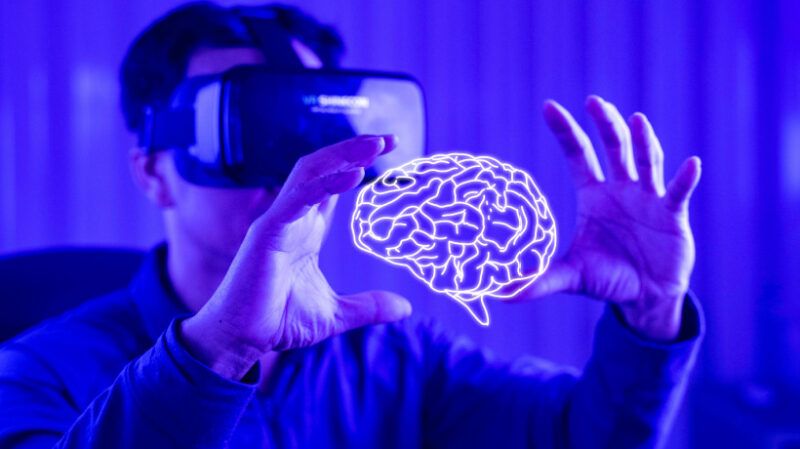
Skill gaps with simulation training
In today’s fast-paced, skill-driven economy, employers across the industry are tackling the skills gap, a persistent issue, from manufacturing and healthcare to high-tech and finance. Despite the enormous investment in employee training and education, many organizations continue to report lacking the real-world skills workers need to meet job demands. As a result, learning and development (L&D) leaders are asking important questions. Can simulation training close the skill gap faster and more effectively than traditional learning methods?
The short answer is: yes. But to understand why, we need to unfold what simulation training is, how it differs from traditional learning models, and how it accelerates both skills acquisition and job preparation.
Understanding skills gaps
A skill gap refers to the disconnect between the skills required by an employer and the capabilities owned by an employee. This gap can be caused by a variety of factors, including rapid technological advancements, inadequate transition to employment, outdated training methods, and inability to maintain or reskill workers quickly enough. This gap is costly in terms of lost productivity and operational inefficiency, as well as missed opportunities for innovation and growth.
Traditional learning can be useful for basic knowledge, but often struggle to cope with real-world complexities. Learners may understand this theory, but they still lack confidence and experience when it’s time to apply it. Therefore, simulation training intervenes as a game changer.
What is simulation training?
Simulation training is a technique that uses a realistic and interactive environment to replicate job-related tasks, decisions, and scenarios. This allows learners to “learn by doing” in a safe, controlled, and feedback-rich setting.
Simulations may be driven by details such as:
Scenario-based learning module. AI and adaptive learning engines. Virtual reality (VR) and Augmented Reality (AR). A story of gamification and divergence. Real-time feedback and analysis.
Unlike passive learning formats such as slide decks and lecture videos, simulations are experiential, dynamic, and performance-driven. Learners are tasked with navigating the task, applying knowledge, learning from their choices, and being placed in the role of decision makers, being tasked with learning from their choices, as they are at work.
How simulation training can close skills gaps faster
Explore important ways that simulation training can help fill skill gaps more effectively and quickly than traditional methods.
1. Not just theory, but real-world applications
One of the main limitations of traditional learning is the delay between learning and application. Learners can grasp concepts during training, but often have difficulty applying them when faced with actual complexity.
Simulations close this gap by placing learners directly in context-rich scenarios. For example, a customer success manager may be tasked with handling dissatisfied clients, but healthcare professionals may need to diagnose patients in high-pressure situations. In both cases, simulation mimics the environment, constraints, and the emotional dynamics of the actual work.
result? Learners are learning in context rather than abstraction, which enhances practical and employment-ready skills.
2. Fast feedback, faster learning
Traditional learning often provides delays or limited feedback via quizzes, assignments, or performance reviews. In contrast, simulation training provides immediate, targeted feedback based on learner decisions and actions.
This instant feedback loop is useful for learners.
It will be recognized when a mistake occurs. A look back at the decision-making process. Correct operation in real time. It will deepen the lessons internalize.
When learners have the opportunity to repeat tasks and improve their strategies based on real-time insights, they significantly shorten their path to proficiency and confidence.
3. A safe space to make mistakes and improve
Failure is a powerful teacher, but in a real job setting, failure can come at a high cost. One of the greatest benefits of simulation training is that it provides a risk-free environment for learners to make decisions, take action and confirm outcomes without affecting their actual customers, patients, or business operations.
Whether you’re a manager navigating emergency landings, a manager navigating conflicts, or a manager for troubleshooting system errors, learners can safely fail, reflect and improve. This reduces fear and builds a critical component of long-term skill development: resilience.
4. Adaptive learning based on skill level
Not all learners start at the same time. Traditional learning usually follows a fixed path, assuming that all learners need the same information and the same information. This approach can be boring for some and overwhelmed for others.
Simulation-based platforms, especially those powered by AI and adaptive learning technology, can be adjusted in real time based on:
Learner response. Skill proficiency. Trust level. Behavior pattern.
This allows each learner to acquire personalized challenges that are neither too easy, difficult, nor too difficult, while still promoting growth while maintaining engagement.
5. Accelerate onboarding and role preparation
Time to production time is an important metric for new recruits. The more effective the employee performs, the greater the ROI due to training. Simulation training significantly reduces onboarding time by immersing employees in role-specific scenarios from day one.
Instead of passively spending a few weeks of learning processes, new hires can interact with a simulated system, customer, or decision framework. for example:
Sales teams can practice processing objections and closing the transaction. Engineers can navigate the troubleshooting system under pressure. HR experts can rehearse difficult conversations and policy enforcement.
This will help you prepare faster, reduce training times and increase your confidence early in the job cycle.
6. Measurable results and skill analysis
Traditional learning often lacks accuracy in tracking what learners really master. Meanwhile, the simulation platform offers deep performance analysis that exceeds the quiz score.
You can track it:
Decision-making patterns. The amount of time it takes to respond. Emotional tone and communication style (via AI/NLP). Frequency of correct and incorrect responses. It advances over repeated attempts.
This data allows L&D leaders to diagnose skills gaps, find high potential employees, and accurately adjust interventions. Organizations can also link learning outcomes to key performance indicators and create more accountable strategic training features.
Real-world examples of real-world simulation training
Simulation learning solutions are applied globally across the industry.
Walmart used VR-based simulations to train Black Friday employees to improve response times and customer service during high-stress events. For a long time, airlines have relied on flight simulators to train pilots to ensure safety and accuracy without risking their lives. Healthcare providers use patient care simulations to train nurses and doctors on everything from diagnosis to emergency response. Tech companies deploy customer service and cybersecurity simulations to prepare their teams for unpredictable real-world scenarios.
These examples illustrate the scalability, adaptability, and practical impact of simulation training.
Is simulation training a perfect alternative to traditional learning?
It’s not perfect. Basic knowledge, terminology, compliance rules, technical theories, and more benefit from traditional forms such as e-learning modules, reading materials, and instructor-led training. However, simulation training is the fastest and most effective bridge between knowing and doing. Knowledge must be integrated into the learning ecosystem as a layer of application that is being tested, practiced and acquired. Think of it like this: Traditional learning will teach you what to do. Simulations tell you how and when to do it and what happens if you don’t.
Conclusion: Smarter ways to bridge the skill gap
Skill gaps are performance issues and you need to have a faster, smarter and more tailored to the demands of your work. Simulation training accelerates skill development by providing an immersive, adaptive, and performance-oriented experience. Equipped with learners with real judgment, critical thinking, and confidence, making them faster and faster than traditional methods.
In a world where agility and preparation are unnegotiable, simulation-based learning is more than just a supplement. It is a strategic obligation. For organizations looking to maintain their future workforce and provide measurable training ROI, the question is not whether simulation training works. The real question is, can you afford not to use it?
Ozemio
We recognize the very simple yet value of the elemental value, with no transformation occurring in silos. Our talent transformation solutions are holistic, but targeted. We provide tailor-made plans specific to your business requirements


